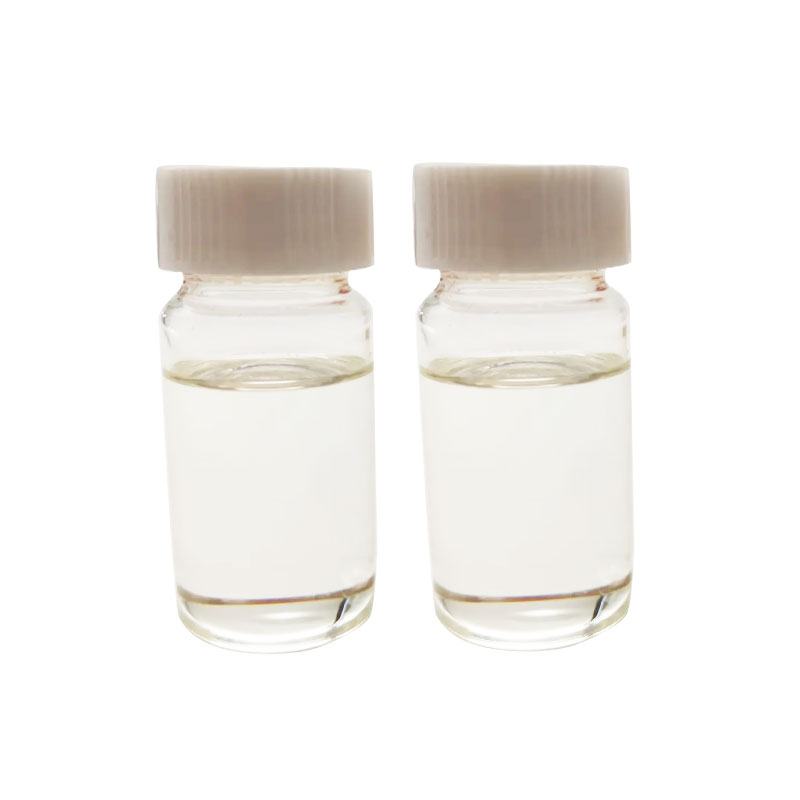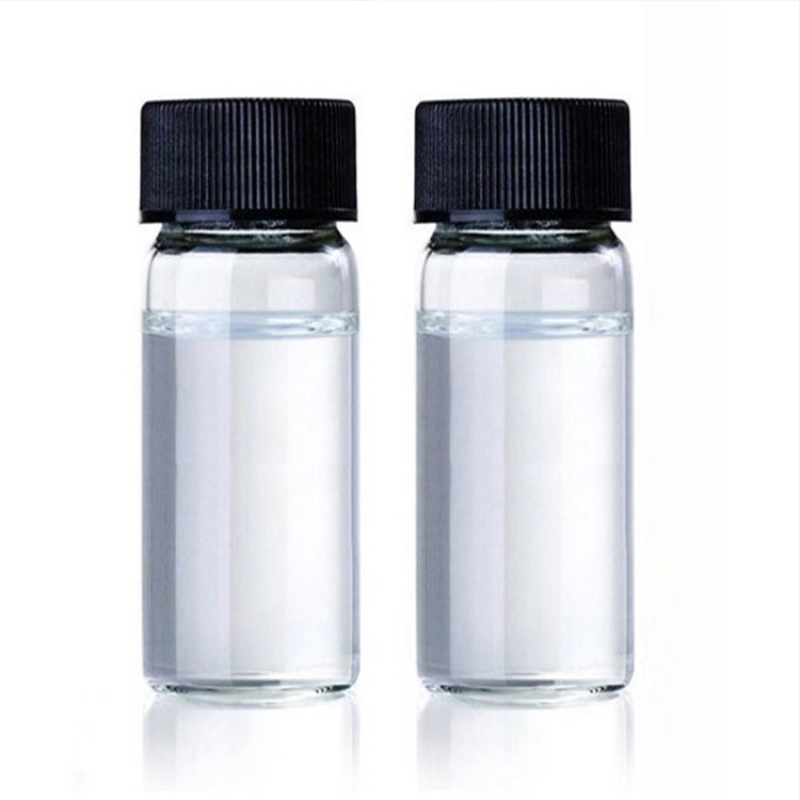Products Description of 2-[(4-Aminophenyl)sulfonyl]ethyl hydrogen sulfate CAS#2494-89-5White crystals. Soluble in water, insoluble in ethanol, ether and benzene.
Contact Now
Products Description of LDAO CAS#1643-20-5This product is a colorless or light yellow transparent liquid with a relative density of 0.98 at 20°C. It is easily soluble in water and polar organic solvents, slightly soluble in non-polar organic solvents, and exhibits non-ionic or cationic properties in aqueous solutions. When the pH value is less than 7, it is cationic.
Contact Now
Cyclohexanone CAS#108-94-1Cyclohexanone is a colorless, clear liquid with soil smell; its impure product seems as mild yellow color. It is miscible with numerous different solvents. without difficulty soluble in ethanol and ether. The decrease publicity restrict is 1.1% and the higher publicity restriction is 9.4%.
Contact Now
Products Description of Shellac CAS#9000-59-3 Shellac flakes, also known as shellac paint flakes or purple film flakes, are obtained by melting shellac raw glue or dissolving it with solvents to remove impurities. The color depth of the shellac paint flakes produced varies according to different requirements. Shellac paint flakes are a biological product used on furniture and home interior paint. They are free of pollutants, non-irritating odor, non-toxic, and non-allergic to the skin. They are a high-end paint.
Contact Now
Products Description of 2-Methylpiperazine CAS#109-07-9Colorless crystals, hygroscopic, with a typical amine odor, easily soluble in water and acetone.2-Methylpiperazine Chemical PropertiesMelting point 61-63 °C (lit.)Boiling point 155 °C/763 mmHg (lit.)density 0.817 g/cmrefractive index 1.4378 (estimate)Fp 149 °Fstorage temp. Keep in dark place,Inert atmosphere,Room temperaturesolubility 435g/lpkapK1:5.62(+2);pK2:9.60(+1) (25°C)form Crystalline Powder, Crystals and/or Chunkscolor White to yellowPH11-12 (50g/l, H2O)Water Solubility 78
Contact Now
Products Description of 2-Bromoethanol CAS#540-51-22-Bromoethanol is a colorless or light yellow hygroscopic liquid with relatively stable and toxic chemical properties.
Contact Now
Products Description of 4-Chromanone CAS#491-37-2White crystals.
Contact Now
Products Description of POLYGLYCERYL-4 LAURATE CAS#75798-42-4Colorless liquidFactory and Equipment ShowFast delivery timeInventory 2-3 working days New production 7-10 working days
Contact Now
Dimethylolurea Chemical PropertiesMelting point 125 °C (dec.)(lit.)Boiling point 224.08°C (rough estimate)density 1.34refractive index 1.4610 (estimate)Fp 100 °Cstorage temp. 2-8°Cpka12.14±0.46(Predicted)form powder to crystalcolor White to Almost whiteWater Solubility 150 g/LMerck 14,6968BRN 1811870InChIKeyQUBQYFYWUJJAAK-UHFFFAOYSA-NLogP-2.610 (est)CAS DataBase Reference140-95-4(CAS DataBase Reference)NIST Chemistry ReferenceDimethanolurea(140-95-4)EPA Substance Registry SystemDimethylolurea (140-95-4) Safety InformationHaz
Contact Now
Products Description of Tannic acid CAS#1401-55-4This product is a light yellow to light brown powder with a special odor and an extremely astringent taste; soluble in 1 part of water or ethanol, soluble in acetone, and insoluble in chloroform or ether.Tannic acid Chemical PropertiesMelting point 218 °C (lit.)Boiling point 862.78°C (rough estimate)density 1.2965 (rough estimate)refractive index 1.7040 (estimate)FEMA 3042 | TANNIC ACID (QUERCUS SPP.)Fp 198°Cstorage temp. Storage temperature: no restrictions.solubility ethanol: soluble100mg/mL, yellow
Contact Now
Products Description of Chlorhexidine CAS#55-56-1Used for gingivitis (acute necrotizing ulcerative gingivitis), oral infections after dental surgery, prevention and treatment of oral infections in patients with cancer and leukemia, stomatitis and follicular stomatitis caused by bacterial or fungal oral infections caused by wear of dentures Chemicalbook , Reduce dental plaque.
Contact Now
Products Description of 3-Dimethylaminopropylamine 99.5% CAS#109-55-7Colorless and transparent liquid, soluble in water and organic solvents. Relative density 0.8100. Boiling point 133℃. Freezing point - 70°C. Below this temperature it solidifies into glass. Flash point (closed cup) 15℃. Refractive index 1. 4350.
Contact Now
Products Description of Citric Acid Monohydrate CAS#5949-29-1 Citric acid monohydrate is an organic compound with the chemical formula C6H10O8 and a molecular weight of 210.139.
Contact Now
Products Description of 1,3,5-Benzenetricarboxylic acid chlorideCAS#4422-95-1White powder1,3,5-Benzenetricarboxylic acid chloride Chemical PropertiesMelting point 32-38 °C (lit.)Boiling point 180 °C/16 mmHg (lit.)density 1.487 g/mL at 25 °C (lit.)refractive index 1.5945-1.5965Fp >230 °Fstorage temp. Store below +30°C.solubility decomposesform Liquidcolor Clear colorless to slightly yellowWater Solubility decomposesSensitive Moisture SensitiveBRN 2940936CAS DataBase Reference4422-95-1(CAS DataBase Reference)NIST Chemistry
Contact Now
Products Description of 2-Hydroxynicotinic acid CAS#609-71-22-Hydroxynicotinic acid is an organic intermediate.
Contact Now
Products Description of Aluminium Magnesium Silicate CAS#12511-31-8It is a substance with a very large specific surface area and a very developed microporous system. Its chemical formula is Mg2Al3 (AlSi5O18).
Contact Now
Products Description of HydroquinoneCAS#123-31-9Hydroquinone is also called hydroquinone and 1.4-benzene. Molecular formula C6H6O2. Molecular weight 110.11. Colorless or white crystals. It changes color easily when exposed to light in the air. Its aqueous solution can oxidize to brown in the air, and oxidizes faster in alkaline medium. Melting point 170-171℃, boiling point 285-287℃, relative density 1.33215, UVλmax 288nm in water. It is easily soluble in hot water, ethanol and ether, and slightly soluble in benzene. It has active chemical properties and is easily oxidized.
Contact Now
Products Description of 4-Morpholineethanesulfonic acid CAS#4432-31-92-Morpholineethanesulfonic acid is a white solid powder at room temperature and pressure. It is soluble in polar solvents such as water, ethanol, methanol, and acetone, but insoluble in non-polar solvents. Its molecular structure contains a morpholine ring and an ethanesulfonic acid group. The morpholine ring is a nitrogen-containing heterocyclic compound with high stability and inertness, and has no obvious toxicity or irritation to organisms.
Contact Now
Products Description of Isopropylamine CAS#75-31-0Isopropylamine is also known as 2-aminopropane. It is a colorless liquid with an ammonia smell. Its molecular weight is 59.11. Its boiling point is 33-34℃. Its relative density is 0.694 (15/4℃). Its refractive index is 1.3770 (15℃). Its flash point is -37℃. It is miscible with water, ethanol and ether. It is used as a raw material for pesticides, medicines, dyes, rubber vulcanization accelerators, emulsifiers, detergents and water treatment agents.
Contact Now
Products Description of Glyceryl monostearate CAS#31566-31-1White or light yellow waxy solid, odorless and tasteless. Relative density 0.97, melting point 56-58°C. Soluble in hot organic solvents such as ethanol, benzene, acetone, mineral oil, fatty oil, etc., insoluble in water, but can be dispersed in hot water to form an emulsion under strong stirring. HLB value 3.8.
Contact Now
Products Description of 2,3,4,5-Tetrafluorobenzoic Acid CAS#1201-31-62,3,4,5-Tetrafluorobenzoic acid is a chemical substance with the molecular formula C7H2F4O2.Colorless flaky crystals.
Contact Now
Products Description of Coconut oil CAS#8001-31-8Coconut oil is an oil extracted from coconut pulp (dry pulp contains about 63% to 70% oil). It is a white semi-solid lard-like fat. It has a unique coconut fragrance. The main components are glycerides of lauric acid, myristic acid, and oleic acid. The melting point is 23 to 28°C. The relative density is 0.917 to 0.919 (25/25°C). The saponification value is 250 to 264. The iodine value is 8 to 12. The acid value does not exceed 6. It is soluble in alcohol, chloroform, ether, and carbon disulfide, but insoluble in water.
Contact Now
Products Description of 4-Acetylpyridine CAS#1122-54-94-Acetylpyridine is an organic compound with the molecular formula C7H7NO.4-Acetylpyridine Chemical PropertiesMelting point 13-16 °C(lit.)Boiling point 212 °C(lit.)density 1.095 g/mL at 25 °C(lit.)refractive index n20/D 1.529(lit.)Fp >230 °Fstorage temp. Inert atmosphere,Room Temperaturesolubility Chloroform, Ethyl Acetateform LiquidpkapK1: 3.505(+1) (25°C)Specific Gravity1.110 (20/4℃)color brown-yellowishWater Solubility insolubleBRN 107629InC
Contact Now
Products Description of AMIX 1000 CAS#68910-05-4White powderAMIX 1000 Chemical PropertieBoiling point 199.7℃ at 101.325kPadensity 1.032 at 20℃vapor pressure 6.1-27.7hPa at 20-50℃form ViscousEPA Substance Registry SystemEthanol, 2-amino-, reaction products with ammonia, by-products from (68910-05-4)Factory and Equipment ShowFast delivery timeInventory 2-3 working days New production 7-10 working days
Contact Now


![2-[(4-Aminophenyl)sulfonyl]ethyl hydrogen sulfate CAS#2494-89-5](https://d3rnfhc14zcmdf.cloudfront.net/cdn/ff/zZzg_lRqIZ9Z-CjQBN9JQD7mHmr_8o1Ac1pA77EgT-I/1718527026/public/styles/chanpinzhutu/public/2024-06/Chlorobutanol_58.jpg?itok=G46_f_7M)




























